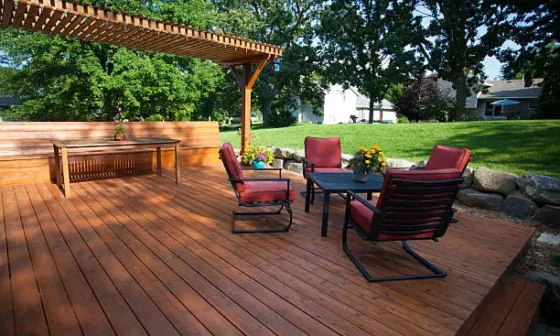If you’re planning to paint your home or office, you may have come across the term “microporous paint.” This type of paint is becoming increasingly popular due to its unique ability to allow moisture and air to pass through the painted surface.
What is Microporous Paint?
Microporous paint is a type of coating that is designed to be permeable to moisture and air. It contains tiny pores or gaps that allow air and water vapor to pass through the paint and into the substrate beneath. This is in contrast to traditional paint, which creates a seal over the surface, preventing moisture and air from passing through.
Microporous paint is typically used on exterior surfaces, such as masonry, brickwork, and concrete. It can also be used on interior walls in areas that are prone to moisture, such as bathrooms and kitchens. It is available in a range of colors and finishes, so it can be used for both decorative and functional purposes.
Comparison with Traditional Paint: Pros and Cons of Microporous Paint
While both microporous paint and traditional paint have their own unique benefits, they also have distinct drawbacks. In this section, we’ll compare and contrast microporous paint with traditional paint, highlighting the pros and cons of each option.
Pros of Microporous Paint
-
Breathability – As we’ve mentioned earlier, microporous paint allows the substrate to breathe, preventing problems such as damp and mold. Traditional paint can trap moisture, leading to mold and mildew growth.
-
Durability – Microporous paint is more durable than traditional paint, less likely to crack, peel, or blister. It can last up to 20 years before needing to be repainted, while traditional paint may require repainting every 5-7 years.
-
Low Maintenance – Due to its durability, microporous paint requires less maintenance over time. Traditional paint may require regular touch-ups and repairs to keep it looking good.
-
Environmentally friendly – Microporous paint is water-based and contains fewer VOCs (volatile organic compounds) than traditional paint, making it more environmentally friendly.
Cons of Microporous Paint
-
Cost – Microporous paint can be more expensive than traditional paint, which may be a drawback for those on a tight budget.
-
Limited color options – Microporous paint may have limited color options compared to traditional paint, which may be a concern for those who want a wider range of colors to choose from.
-
Surface preparation – Microporous paint may require more surface preparation than traditional paint, which can add to the overall cost of the project.
Sustainability of Microporous Paint
In addition to its many benefits over traditional paint, microporous paint is also a sustainable choice for those looking to reduce their environmental impact. Microporous paint is designed to be more environmentally friendly than traditional paint, in a number of ways.
Reduced Energy Consumption
One of the main ways that microporous paint is more sustainable than traditional paint is by reducing energy consumption. This is because microporous paint is formulated to reflect heat, which can help to keep a building cooler during the summer months. By keeping a building cooler, less energy is needed to run air conditioning systems, which can help to reduce the overall carbon footprint of a building.
Lower VOC Content
Another way that microporous paint is more sustainable than traditional paint is by containing fewer VOCs (volatile organic compounds). VOCs are chemicals that can be released into the air during the painting process, contributing to air pollution and health problems. By using microporous paint, homeowners can help to reduce the amount of VOCs released into the environment.
Long-Lasting
As mentioned above Microporous paint is also a more sustainable choice because it is long-lasting. Unlike traditional paint, which may need to be repainted every 5-7 years, microporous paint can last up to 20 years before needing to be repainted. This means that less paint is needed overall, reducing the amount of waste produced by painting projects.
Recyclable
Finally, some brands of microporous paint are recyclable, making them an even more sustainable choice. These paints can be recycled at the end of their useful life, reducing the amount of waste produced by the painting industry.
How to Apply Microporous Paint
Microporous paint is a great choice for those looking for a long-lasting, breathable paint finish. Here’s a step-by-step guide on how to apply microporous paint to ensure the best possible results:
-
Surface Preparation
As with any painting project, the key to a successful outcome is proper surface preparation. Start by cleaning the surface you’ll be painting thoroughly, using a damp cloth to remove any dust, dirt, or grime. Allow the surface to dry completely before proceeding.
If the surface has any cracks, holes, or other imperfections, fill them in with an appropriate filler and sand smooth. For new surfaces, it’s also a good idea to apply a primer to help the paint adhere better.
-
Painting Technique
When it’s time to apply the paint, it’s important to use the right technique. Begin by stirring the paint well to ensure an even consistency. Apply the first coat of paint, using a roller or brush as appropriate. For best results, use a roller with a nap of at least 5mm.
Allow the first coat to dry completely before applying a second coat. Again, use the same painting technique as before, being careful to avoid drips or runs. If necessary, sand lightly between coats to ensure a smooth finish.
-
Aftercare
Once the final coat has been applied, allow the paint to dry completely before subjecting it to any wear and tear. Microporous paint is more durable than traditional paint, but it’s still important to take care of it to ensure a long lifespan.
Avoid exposing the painted surface to excessive moisture or heat, as this can cause damage. Regularly clean the surface to remove any dirt or debris, using a mild detergent and a soft cloth. Avoid using abrasive cleaners or tools that can scratch or damage the paint.
Availability and Cost of Microporous Paint in the UK
Microporous paint is becoming increasingly popular in the UK due to its numerous benefits, but many people may be wondering where to purchase it and what the cost might be.
Availability
Microporous paint can be found in most paint and DIY stores throughout the UK. It’s also available to purchase online from a variety of retailers. When purchasing microporous paint, it’s important to check the label to ensure that it’s suitable for the surface you’ll be painting. Microporous paint is available in a variety of finishes, including matt, satin, and gloss, so choose the one that best suits your needs.
Cost
The cost of microporous paint can vary depending on the brand, the finish, and the size of the container. On average, a 5-litre container of microporous paint can cost between £30-£50. This may seem more expensive than traditional paint, but it’s important to consider the long-term benefits of using microporous paint, such as its durability and breathability.
In addition to the cost of the paint itself, it’s also important to factor in the cost of any additional tools or materials needed for the project, such as brushes, rollers, and masking tape. However, since microporous paint typically requires fewer coats than traditional paint, the overall cost of the project may still be lower.
Summary
Microporous paint is an excellent option for those looking for a breathable coating for their walls. It offers a range of benefits, including improved air quality, increased durability, and environmental friendliness. By following the manufacturer’s instructions carefully, it can be applied effectively to a range of surfaces, providing a long-lasting and attractive finish.



